Battle of the Neretva, also known as the Battle for the wounded, is a common name for a series of battles in the Neretva valley between Yugoslav Partisans and the Axis forces during February and March 1943. For the Germans, this was the Operation Weiss II, but in Yugoslav historiography, this was the culmination of the 4th Enemy Offensive.
During the Axis Operation Weiss I, the Partisans’ leadership decided to initiate the offensive towards the valley of the Neretva river. On February 8th, Tito presented a plan of the offensive at a conference with the staff of three elite divisions: the 1st Proletarian Division, the 2nd Proletarian Division, and the 3rd Shock Division.
Partisans’ plan for the offensive:
- Right column – the 2nd Proletarian Division was tasked to advance past Imotski and reach the village of Dreznica, occupy it and cut off the communication between Jablanica nad Mostar. After the occupation of the village, the task was to protect the right flank of the Partisans’ main forces against the intervention of the Italian garrison in Mostar and to continue advancing towards Jablanica with one brigade.
- Central column – the 3rd Shock Division had the most difficult task: to capture Prozor, Konjic, and all strongpoints in the valley of rivers Rama and Neretva, and to open the way across the Neretva.
- Left column – the 1st Proletarian Division was ordered to advance past Gornji Vakuf, capture the mountain pass Ivan sedlo and cut off the communication between Sarajevo and Konjic. They also had to provide protection for the North flank of the Partisans’ main forces against possible German intervention from Sarajevo. The 9th Dalmatian Division was tasked with securing the right flank and the background of the 2nd Proletarian Division and to follow the withdrawal of the Central Hospital.
The 7th Bania division was tasked to protect he Central Hospital (with around 4.000 sick and wounded) from the north.
The Main Operation Group counted over 20. 000 soldiers.
The Axis forces engaged in the Operation Weiss II:
- 717th Division, 718th Division and the 5th Ustasha Brigade (Black Legion) – advance past Bugojno to Livno
- 7th SS Division and 369th Legionnaires’ Division – advance in the direction Drvar – Glamoč – Livno
- 18th Italian army corps and 6th army corps with Chetniks – advance from the south and southeast.
The beginning
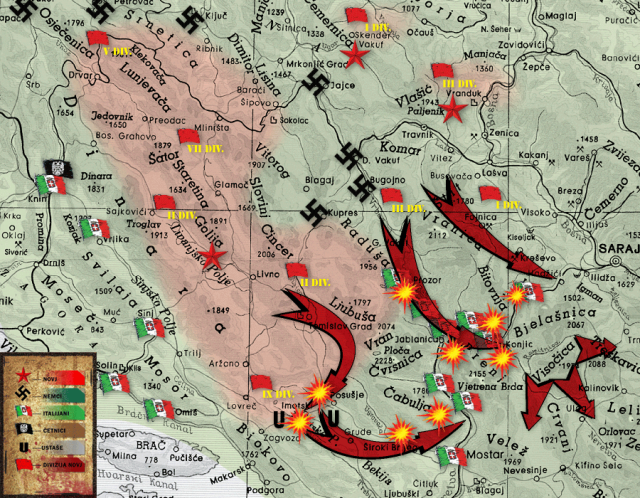
The right column (2nd Proletarian Division) started its advance with easily achieved victories over the NDH garrisons in Posušje and Imotski on 9th and 10th of February. On 15th of February, they occupied and secured the village of Drežnica. The 1st Battalion of the 260th Regiment of the Murga Division intervened from Mostar, but this battalion has been almost completely annihilated during the fight with parts of the 2nd Proletarian Division. In late February, parts of the 2nd Proletarian Division captured Jablanica and completed their main task.
The left column (1st Proletarian Division) was only partially concentrated, but they decided to go ahead with the plan using only two of its brigades. On 18th of February, they successfully captured the mountain pass Ivan sedlo and the railway station in Raštelica. Their surprise attack on Konjic failed.
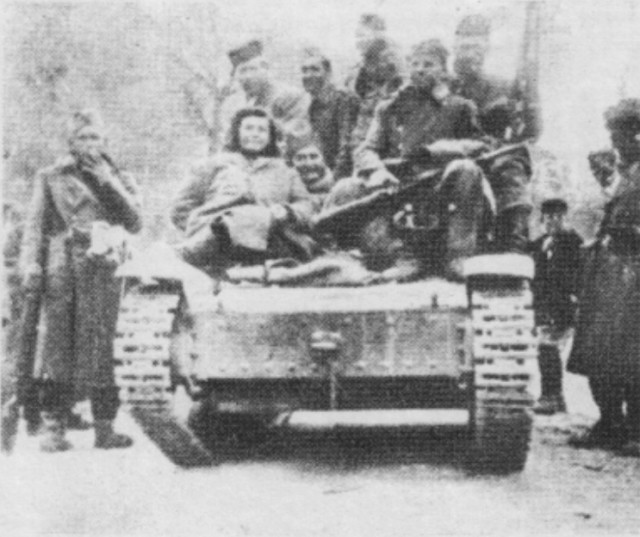
The central column began their attack on Prozor on the evening of 15th February, but they failed due to fierce resistance of the garrison. Prozor was defended by a part of the Italian Murge Division. After receiving reinforcement, the 3rd Division had received an order from Tito (who was in the nearby Scit village). The order simply stated: „Prozor must fall tonight!“
The second attack on Prozor began on February 23rd. During this attack, the Partisans used howitzers like mountain guns for direct targeting of bunkers and strongpoints. During the night, the Partisan units liberated Prozor. The Italians suffered heavy losses in the fight for Prozor. The Partisans captured rich war booty after the liberation of Prozor and Jablanica.
Partisan counter attack at Gornji Vakuf
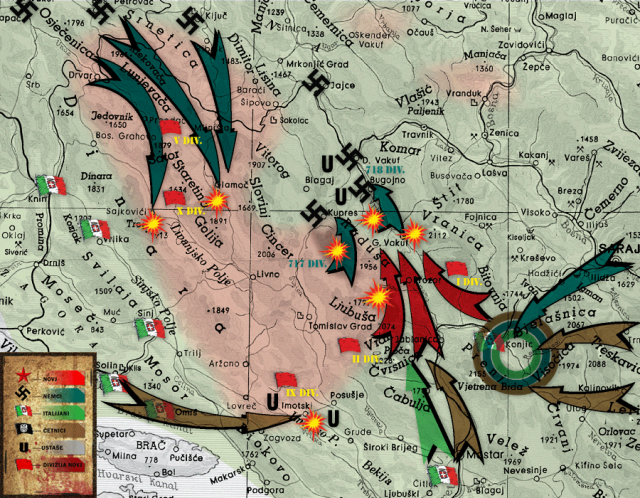
On 19th of February, the German battle group „Vogel“, consisting of the 718th Division, the 5th Ustasha Brigade (Black Legion) and artillery, advanced towards Gornji Vakuf. They captured Gornji Vakuf and then found themselves stuck in a ten-day-long battle against the reinforced 7th Banija Division ahead of Prozor.
In late February, Tito’s Main Operational Group found itself in a critical situation. There was constant pressure from the north on Prozor (the Central Hospital was there), and increasing pressure from the Italians and Chetniks from south and southeast. The 7th SS and 369th Division were approaching from the west.
In that situation, Tito decided to reverse the direction of the attack. Instead of pushing over Neretva, he decided to strike hard at the Germans pressuring Prozor. He also ordered the Pioneer company to destroy all bridges across Neretva. With this tactical move, Tito tried to bluff the Axis forces and make them think that the Partisans want to break trough in the north, not in the south.
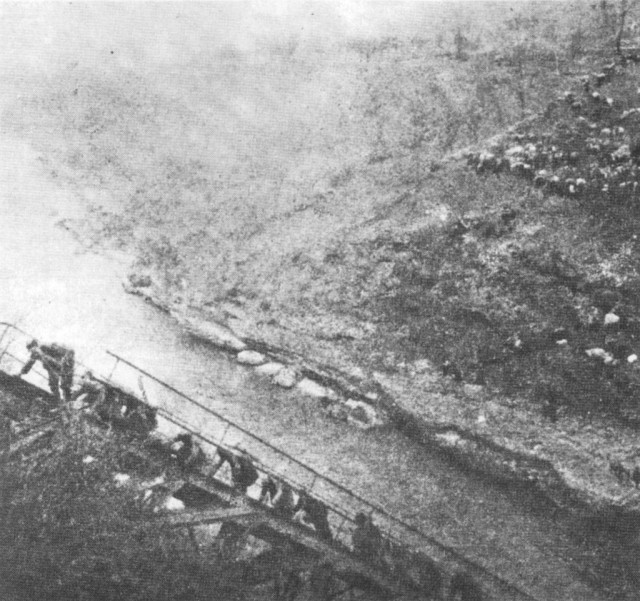
The Partisan forces engaged for the counter attacks at Gornji Vakuf were:
- The right column under the command of Koca Popovic – the 1st Proletarian Brigade, the 3rd Sandzak Brigade and the 1st Dalmatian Brigade;
- The central column under the command of Peka Dapcevic – the 2nd and the 4th Proletarian Brigade, the 7th Banija Brigade and the 3rd Krajina Brigade accompanied by tanks;
- The left column under the command of Pavle Jaksic – the 8th Banija Brigade and the 3rd Krajina Brigade.
The main task was to surround and destroy the German forces in Gornji Vakuf.
The attack began on March 3rd at 3 p.m. The right column has managed to complete its mission and cover the right side.
The central column had the most difficult task. Their task was to repress units of the Battle Group „Vogel“ to Gornji Vakuf. After a fierce hand-to-hand combat, they managed to break through the lines of the 717th Division.
The left column progressed very slowly. Because of their delay, the German forces managed to retreat to Bugojno. The German command realized that the Partisans want to break through towards the north, but they made a wrong conclusion.
Tito did not want to continue the attack. He achieved what he wanted – to save the wounded and sick soldiers. He ordered an 180-degree turn and redirected the bulk of his army back to the Neretva.
Forcing the river Neretva
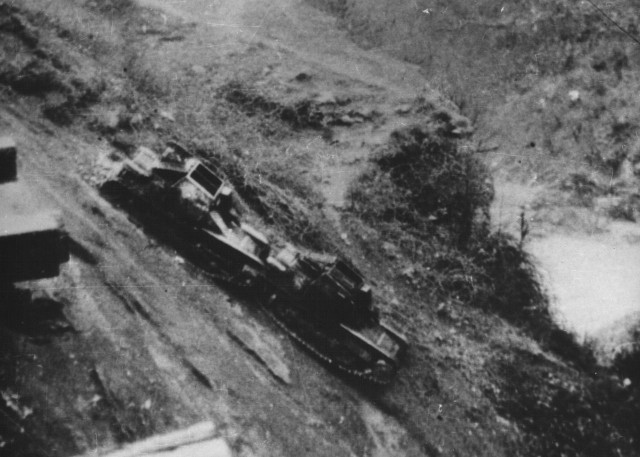
In the night of March 6th, a group of soldiers called „thunder of the tenths“ crossed Neretva, cleaned all Chetniks from the eastern bank and secured the bridgehead.
The same pioneer company that has destroyed the bridge constructed again a new, improvised bridge, resting on the skeleton of the old one. The Partisans crossed the river under intense aerial bombardment. The first unit that crossed the bridge immediately got involved in the fight against the Chetniks. The Chetniks completely collapsed and never recovered after this defeat.
The 9th Dalmatian Brigade and the 7th Krajina Brigade were the last ones to cross the improvised bridge. After they had crossed, the bridge was destroyed. With this act, all the wounded and sick were rescued.
The Main Operational Force was forced to throw around ten tanks and all heavy and light artillery into the canyon of the river Neretva. The reason for this is because the terrain of the Eastern Bosnia is covered with high mountains. They had to seize guns and howitzers again.
Conclusion
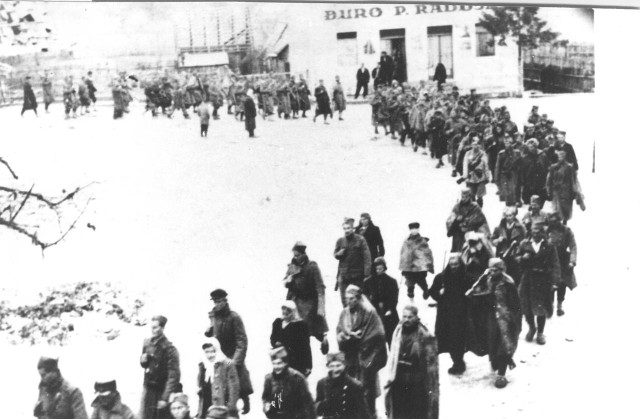
Battle of the Neretva, also known as the Battle for the wounded, was the most humane and the most complex battle of the National Liberation War. The German forces once again failed to destroy the Partisan movement. The Italians suffered heavy losses in this battle. The Chetniks of Draza Mihailovic experienced a complete breakdown.
Battle of the Neretva was not only a military but also a heavy political defeat of the Chetniks. Draza Mihailovic, who was known in the allied countries as the famous fighter against the occupiers, suddenly lost his prestige. The truth of the Chetniks’ collaboration with the Axis powers went out in public internationally. On the other hand, the Partisans became a recognized ally and war partner. Soon afterward, the British military mission arrived at the Supreme Headquarters of the NLA.
Sources:
- Institute of Military History Belgrad
- http://www.znaci.net/00001/256.htm
- http://www.znaci.net/00001/257.htm
- http://www.znaci.net/00001/258.htm
More about the Yugoslav history in World War II visit
About the Author
My name is Edin Hardauš. I was born in Bosnia and Herzegovina, and I live in a small town Kakanj, near Sarajevo.
I am a professor of history. I graduated in November 2010 at the Faculty of Social Sciences (World history), University Džemal Bijedić, Mostar. After graduation, I taught history in primary and secondary schools. I am most interested in war history, military strategy, military weapons and vehicles, and of course the study of historical battles ( reading books and watching documentaries on this subject)
